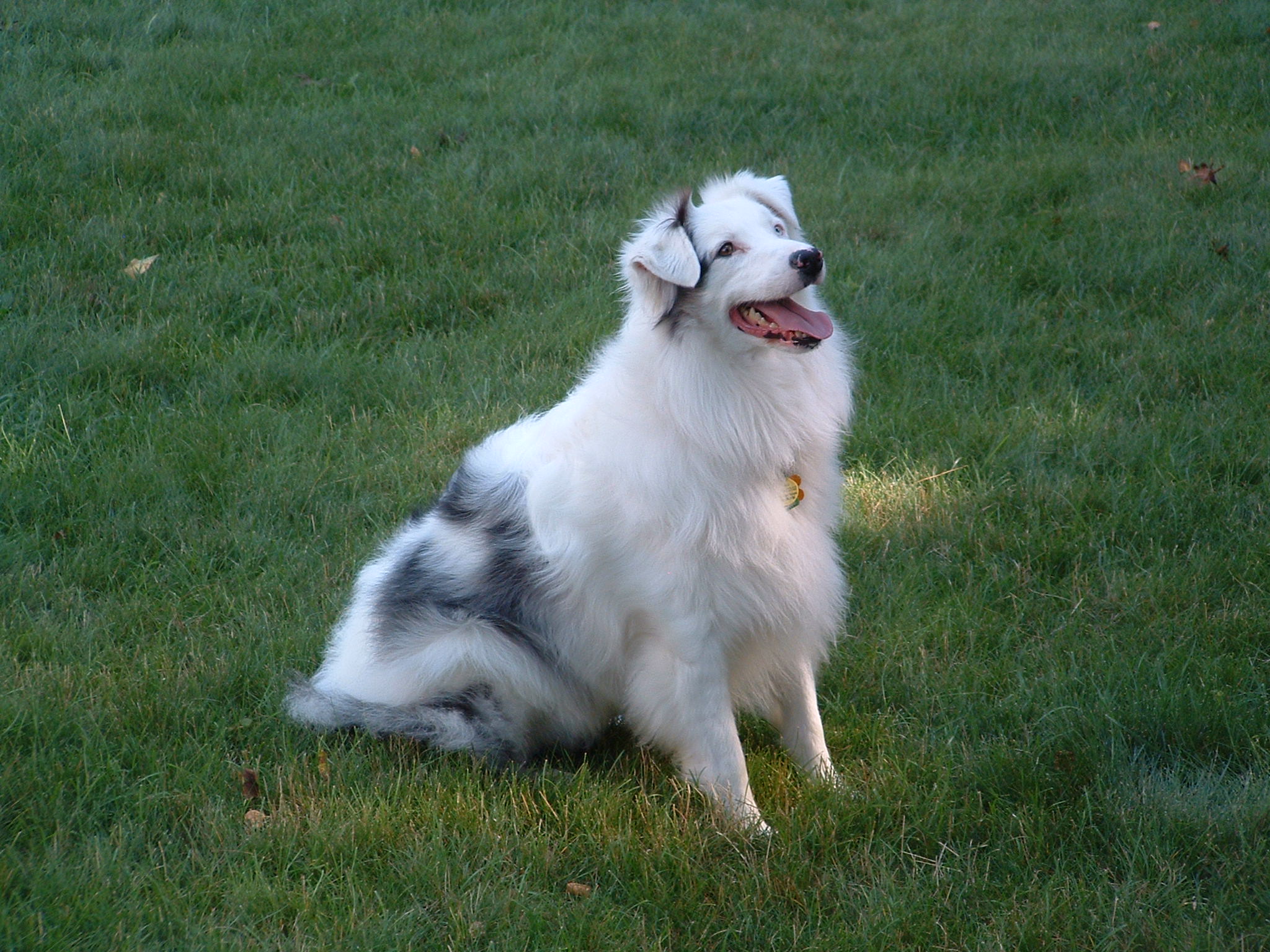In March 2005 I adopted a 3 year old male Australian Shepherd, named Montana. He was a double merle, meaning he was the offspring from breeding two merles. As a result he was born deaf. His eye sight was fine, except in very bright sunlight. I remember my husband’s concern with adopting a deaf dog. With positive reinforcement training, patience, and love, he flourished and reached his full potential. He turned out to be the most well-behaved and sweetest dog I have had the pleasure of having as a member of the family. I could take him anywhere with me. We made therapy pet visits to assisted living homes, presented to young children at a local preschool school and library; teaching responsible pet ownership, how to behave around dogs, and bite prevention. He was good with everyone and other animals. We had a child a year after we adopted Montana. Two years later we adopted a cat, and he was wonderful with both our daughter and cat. Montana was an invaluable training assistant, especially when working with reactive or fearful dogs, and with children who had a fear of dogs. We was very patient with all. Montana crossed over the Rainbow Bridge on August 17, 2014, at the age of 14 years.
years.
There are many myths about deaf dogs such as they startle easily and therefore may be more likely to bite, they are not good with children, and they are difficult to train. These behaviors can exist in any dog. Deaf dogs can be trained just as easily as a hearing dog. Instead of using verbal cues, hand signals are used. Dogs are very visual, and understand body language better than our verbal languages, making training with hand signals easier for the dog to learn.
Montana was sensitive to flashing lights and shadows, so instead of using a small flashing light as a training marker, I used a thumbs up. He barked at shadows cast on our wall from the sun. We once came home to a bloody mess. He tried to escape and had clawed his way through the dry wall right down to the wood of the wall, next to the door that leads to the garage. This caused bleeding from his nails from wearing them down to the kwik. I tried to modify this behavior but it proved to be too difficult. He made very little improvement, so management was the easier option. We made sure to turn lights on before dark and shut all shades and window curtains. We later put timers on our lights so they would go on before dark. He wasn’t walked after dark because the car lights made him nervous. He also hated having his picture taken, once he discovered that the camera flashes a light. So we took pictures of him during the day, when a flash wasn’t needed, and while he was distracted with something else. In the picture shown here, he was in a sit and waiting for me to throw the disc for him to fetch.
Montana initially startled easily if touched. He would jump up and be nervous and confused, even if he wasn’t asleep. Although I always made sure I was in his visual periphery to announce my approach, I knew desensitizing would be important in case others didn’t know better or didn’t know he was deaf. Through systematic desensitization, I worked on reducing Montana’s reaction when startled, taking into consideration that this is an instinctive, reflexive response. I started by pairing a light touch of his fur with a food reinforcer. Gradually, I increased the pressure of the touch on his body and applied pressure with my whole hand. I touched him on his back or rump. This proved effective and he became much less “jumpy” when startled. His response was more like “hey, didn’t see you there”. When waking him up from sleep, I gently blew on his fur.
I live in a two story house and Montana often retreated to our upstairs level to sleep or rest. He learned that when I flicked the upstairs light on/off a few times, I was calling for his attention. He would come to the top of the stairs to find me at the bottom of the stairs waiting for him to come downstairs.
Montana learned many hand signals including those for sit, down, stay, come, spin right, spin left, settle, walk, car ride, play frisbee, play tug, paw, and kiss. He learned to walk off leash without wandering too far off from me. During our off leash outings, he frequently checked in with me, by stopping and turning around to make sure I wasn’t too far behind. He learned to stay within the boundaries of our property. Many friends and neighbors would comment on how well behaved Montana was despite his deafness. They were especially impressed that an Aussie would stay within his boundary, even if another dog was going by.
If anyone has any experience with a deaf, blind, or deaf & blind dog, please share. I am sure it will be helpful for anyone who is considering adopting a dog with these limitations, or who already has such a dog and would be interested in what others have experienced.
Writer: Susie Petitti, B.Sc, MBA, CPDT-KA®, CBCC-KA®, AKC CGC® Evaluator


